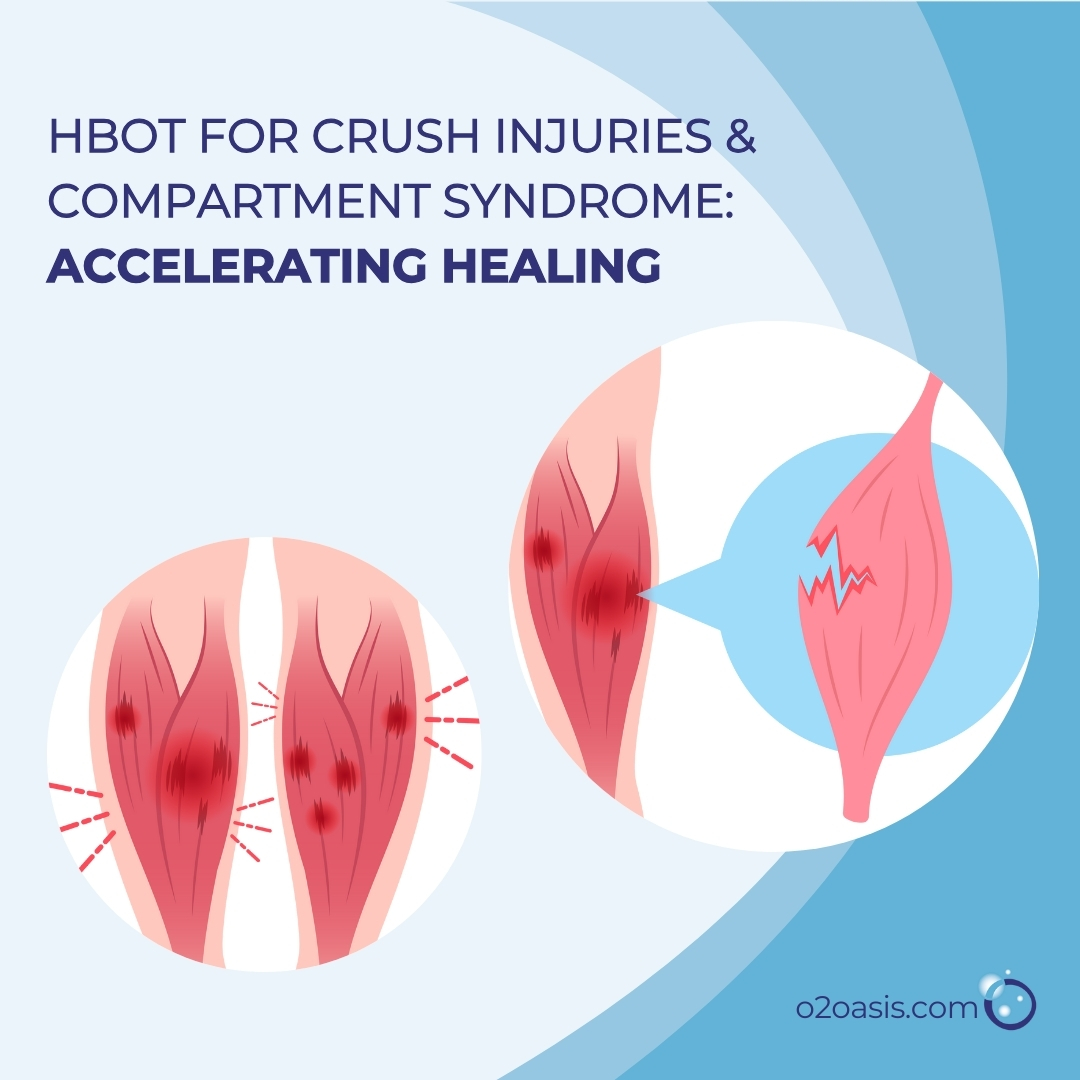
Oxygen Under Pressure: A Game-Changer for Crush Injuries and Compartment Syndrome Recovery
In the world of emergency and trauma care, crush injuries and compartment syndrome rank among the most severe and complex musculoskeletal conditions. Both involve significant tissue damage, compromised circulation, and a high risk of complications like infection, nerve damage, and even limb loss. Fortunately, one increasingly recognized treatment — Hyperbaric Oxygen Therapy (HBOT) — is proving to be a valuable ally in accelerating recovery and improving outcomes for patients facing these serious injuries.
Understanding Crush Injuries and Compartment Syndrome
A crush injury occurs when a body part is subjected to extreme force or pressure, often trapping tissues between two hard surfaces. This can cause severe muscle damage, broken bones, blood vessel rupture, and nerve trauma. One of the most dangerous complications of crush injuries is compartment syndrome — a condition where swelling and internal bleeding increase pressure within muscle compartments, restricting blood flow and potentially leading to permanent damage if not promptly treated.
Both conditions require swift medical attention, including surgical intervention, to relieve pressure and restore circulation. However, even after surgery, tissues remain at risk of ischemia (oxygen deprivation) and infection. This is where HBOT can make a profound difference.
What Is Hyperbaric Oxygen Therapy (HBOT)?
Hyperbaric Oxygen Therapy involves placing a patient in a specially designed chamber where they breathe 100% oxygen at higher-than-normal atmospheric pressure. This allows oxygen to dissolve more efficiently into the blood plasma, delivering increased levels of oxygen to injured tissues — even those with compromised blood flow.
How HBOT Benefits Crush Injuries and Compartment Syndrome
HBOT offers multiple therapeutic benefits in the treatment of crush injuries and compartment syndrome:
- Enhanced Oxygen Delivery to Damaged Tissues: Oxygen is crucial for cell survival and tissue repair. By increasing oxygen availability, HBOT helps injured muscles, nerves, and skin heal more quickly.
- Reduction of Swelling and Inflammation: Hyperbaric oxygen reduces tissue edema (swelling) and decreases pressure within compartments, helping to alleviate pain and prevent further injury.
- Improved Infection Control: Crush injuries and surgical wounds are highly susceptible to infection. HBOT boosts the immune system’s ability to fight bacteria and enhances the effectiveness of certain antibiotics.
- Stimulates New Blood Vessel Growth: HBOT encourages the formation of new capillaries (angiogenesis), restoring blood supply to areas that may have been deprived of oxygen due to injury.
Clinical Support for HBOT in Trauma Cases
Medical studies and clinical case reports consistently support the use of HBOT as an adjunctive therapy for crush injuries and compartment syndrome. Research has shown that patients who receive HBOT alongside standard surgical and medical care experience:
- Faster recovery times
- Reduced rates of infection and tissue necrosis
- Improved functional outcomes and limb salvage rates
- Decreased need for repeat surgeries or amputations
The Undersea and Hyperbaric Medical Society (UHMS) also includes crush injuries and selected cases of compartment syndrome among its approved indications for HBOT.
A Promising Tool in Trauma Recovery
While not a replacement for surgical decompression or emergency trauma care, Hyperbaric Oxygen Therapy offers a powerful supportive treatment for those suffering from crush injuries and compartment syndrome. By accelerating tissue repair, reducing complications, and improving overall outcomes, HBOT is playing an increasingly important role in modern trauma and wound management.